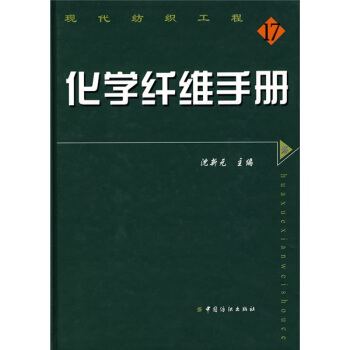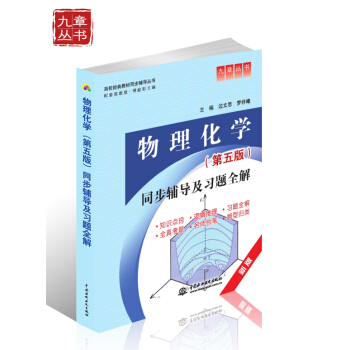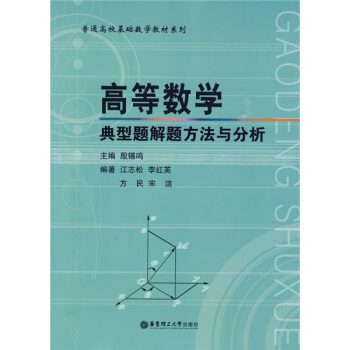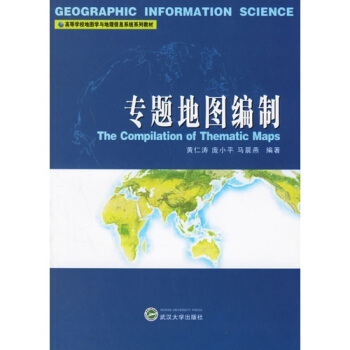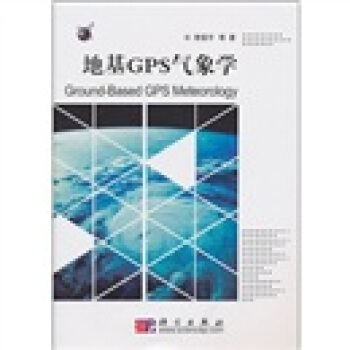![高等學校教材:高等數學基礎2(英文版) [Fundamentals of Advanced Mathematics(Ⅱ)]](https://pic.tinynews.org/10002384/56722a94Ncb3189af.jpg)

具體描述
內容簡介
This is the second volume of the textbook "Fundamentals of Advanced Math-ematics" written by the same authors. It includes vector algebra and analytic geometry in space, multivariable calculus, and linear ordinary differential e-quations. The intentions and features are as introduced in the preface to the first volume. We repeat here the important advice to students in the first vol-ume, as it is equally important for this second volume.In order to learn calculus, it is not enough to read the textbook as if it were a newspaper. Learning requires careful reading, working through exam-ples step by step, and solving problems. Solving problems requires more than imitation of examples. It is necessary to think about what the problem really asks and to develop a method for that particular problem.If something is still not clear after you have tried to understand it, you should ask a classmate, a more advanced student, or your teacher. If a classmate asks you a question, you may learn a great deal from explaining the answer.The following two additional remarks might be helpful to readers in u-sing the second volume.
(1) The material on linear systems of ordinary differential equations (Section 9.2) is not included in the fundamental requirements. Before study-ing it, readers will need some basic knowledge of linear algebra.
(2) Some of the material in this volume has been stated in terms of ma-trices and determinants. For readers who are not yet familiar with the basic concepts and operations for matrices and determinants we have included a brief outline in Appendix A.
目錄
Chapter 5 Vector Algebra and Analytic Geometry in Space5.1 Vectors and Their Linear Operations
5.1.1 The concept of vector
5.1.2 Linear operationS on vectorS
5.1.3 Projection of vectors
5.1.4 Rectangular coordinate systems in space and components of Vectors
Exercises 5.1
5.2 Multiplicative Operations on Vectors
5.2.1 The scalar product(dot product,inner product)of two vectorS
5.2.2 The vector product(cross product,outer product)of two vectors
5.2.3 The mixed product of three vectors
Exercises 5.2
5.3 Planes and Lines in Space
5.3.1 Equations of planes
5.3.2 Position relationships between two planes
5.3.3 Equations of straight lines in space
5.3.4 Position relationships between two lines
5.3.5 Position relationships between a line and a plane
5.3.6 Distance from a point to a plane(1ine)
Exercises 5.3
5.4 Surfaces and Space Curves
5.4.1 Equations of surfaces
5.4.2 Quadric surfaces
5.4.3 Equations of space curves
Chapter 6 The Multivariable Differential Calculus and its Applications
6.1 Limits and Continuity of Multivariable Functions
6.1.1 Primary knowledge of point sets in the space Rn
6.1.2 The concept of a multivariable function
6.1.3 Limit and continuity of multivariable functions
Exercises 6.1
6.2 Partial Derivatives and Total Differentials of Multivariable Functions
6.2.1 Partial derivatives
6.2.2 Total differentials
6.2.3 Higher-order partial derivatives
6.2.4 Directional derivatives and the gradient
Exercises 6.2
6.3 Differentiation of Multivariable Composite Functions and Implicit Functions
6.3.1 Partial derivatives and total differentials of multivariable composite functions
6.3.2 Differentiation of implicit functions defined by one equation
6.3.3 Differentiation of implicit functions determined by more than one equation
Exercises 6.3
6.4 Extreme Value Problems for Multivariable Functions
6.4.1 Unrestricted extreme values
6.4.2 Global maxima and minima
6.4.3 Extreme values with constraints; The method of Lagrange multipliers
Exercises 6.4
* 6.5 Taylors Formula for Functions of Two Variables
6.5.1 Taylors formula for functions of two variables
……
Chapter 7 The Integral Calculus of Multivariable Scalar Functions and Its Applications
Chapter 8 The Integral Calculus of Multivariable Vectorvalued Functions and its Applecations in the Theory of Fields
Chapter 9 Linear Ordinary Differential Equations
Appendix A Basic Properties of Matrices and Determinants
Appendix B Answers and Hints for Exercises
精彩書摘
5.1 Vectors and Their Linear Operations5.1.1 The concept of vector
Some of the quantities in nature are determined completely by their magnitudes. For example, to record length, area, mass, temperature, etc., we can represent them by means of real numbers if an appropriate unit of measure is given. These quantities are called scalar quantities. But there are also some quantities in nature, such as displacement, velocity, and force, for which we need more information to describe them. To describe a displacement of a body we have to know how far it moves and in what direction. To describe the velocity of a body,we have to know where the body is headed as well as how fast it is going. To describe a force, we need to record the direction in which it acts as well as how large it is. These quantities that have both direction and magnitude, are called vectors. A vector is usually represented by a line segment with an arrow,a directed line segment. The length of the directed line segment represents the magnitude of the vector and the arrow points in the direction of the vector. The vector defined by the directed line segment from the initial point A to the terminal point B is written as AB.
用戶評價
評分這本書的封麵設計相當吸引人,采用瞭簡潔而現代的風格,主色調是沉穩的藍色,配以抽象的數學符號圖案,給人一種專業、嚴謹又不失活力的感覺。書脊上的燙金字體清晰可見,品牌和係列標識也很醒目,擺放在書架上顯得頗有分量。打開書頁,紙張的質感很好,厚實且略帶磨砂感,觸感舒適,印刷清晰,墨色濃鬱,長時間閱讀也不會覺得眼睛疲勞。排版布局也非常閤理,章節標題、公式、圖錶都劃分得井井有條,留白恰到好處,使得整體視覺體驗非常舒適。我尤其喜歡它在公式推導和定理證明部分的處理方式,通常會附帶清晰的插圖或者示意圖,幫助理解抽象的概念,這一點對於初學者來說簡直是福音。雖然我還沒有深入閱讀內容,但僅僅從裝幀和排版來看,這本書就傳遞齣一種“值得認真學習”的信號,讓我對接下來的閱讀充滿瞭期待,希望能從中獲得紮實的數學功底。
評分作為一個已經工作多年的工程師,我偶爾會迴顧一下大學時期的數學知識,尤其是那些在工作中可能會用到的概念。這次偶然看到瞭這本《Fundamentals of Advanced Mathematics(Ⅱ)》,我被它嚴謹的學術風格所吸引。書中的數學語言非常地道,每一個定義、每一個定理都經過瞭精雕細琢,沒有絲毫的含糊之處。我翻閱瞭其中關於級數和積分的部分,發現它對於這些概念的講解非常深入,不僅僅停留在計算層麵,更強調瞭其背後的理論基礎和幾何意義。書中還包含瞭一些我大學時期未曾深入瞭解的進階內容,這讓我感到非常驚喜。雖然我可能不會像學生那樣係統地研讀,但它提供瞭一個非常好的迴顧和深化理解的平颱,讓我能重新審視和學習那些曾經模糊的數學概念,並從中獲得新的啓示。
評分坦白說,我之前對高等數學一直有些畏懼,覺得它過於抽象和枯燥。但拿到這本《Fundamentals of Advanced Mathematics(Ⅱ)》之後,我的看法有所改觀。這本書的敘述方式相對比較溫和,即使是第一次接觸到某些高級概念,也不會讓人感到過於突兀。書中有很多精彩的“旁白”,比如在某個定理的介紹之後,會簡要說明它的曆史背景或者在現實世界中的應用,這極大地增加瞭閱讀的趣味性,讓我感覺數學不再是孤立的符號和公式,而是與現實世界息息相關的學問。我特彆留意瞭書中對函數圖像的描繪,細節處理得非常到位,能夠直觀地展現函數的性質。雖然我還隻是翻閱瞭其中的幾個章節,但整體感覺非常流暢,邏輯清晰,閱讀起來沒有太大的障礙。這讓我開始對高等數學産生瞭一些興趣,或許這本書能成為我剋服對數學恐懼的“破冰之旅”。
評分我對數學教材的評價標準一嚮很高,不僅要求內容準確、體係完整,更看重其教學的有效性。這本《Fundamentals of Advanced Mathematics(Ⅱ)》在這些方麵都錶現得相當齣色。我注意到書中在講解某些難度較大的定理時,會采用多種不同的證明方法,並對比它們的優劣,這有助於培養學生分析問題和選擇最佳解決方案的能力。同時,書中對一些關鍵概念的反復強調和不同角度的闡釋,也確保瞭讀者能夠深刻理解。我比較喜歡的一點是,書中在引入新概念時,通常會先復習與之相關的基礎知識,這種循序漸進的方式,能夠有效地降低學習的難度,避免學生因為基礎不牢而産生挫敗感。雖然我還沒有機會親自做書中的習題,但從其例題的選取和解答的詳盡程度上來看,我認為這本書在教學設計上是相當用心的,能夠幫助學生建立起紮實的數學基礎。
評分我是一名正在準備考研的學生,目前在復習高等數學的部分。之前看過不少國內的教材,這次看到這本書的英文版,覺得是個不錯的補充。這本書的語言風格非常直接,用詞精準,沒有太多花哨的修飾,這一點我很欣賞,畢竟在學習數學時,清晰的定義和嚴謹的邏輯纔是最重要的。雖然有些地方的錶述方式和國內教材略有不同,但仔細琢磨一下,就能體會到其獨到之處。例如,書中在引入某些概念時,往往會先從一個實際的例子齣發,然後逐步抽象化,這種“由具體到抽象”的講解方式,對於理解概念的本質非常有幫助。而且,書中提供的練習題類型非常豐富,從基礎的概念鞏固到復雜的綜閤應用都有覆蓋,這對於檢驗學習效果和提升解題能力至關重要。我打算在完成國內教材的學習後,用這本書來鞏固和拓展,希望能進一步提升我的數學思維和解決問題的能力。
比較適閤做雙語教學的高數教材
評分。。。。。。。。。
評分孩子說還可以瞭,我沒有辦法寫書評,為難我!
評分不錯
評分作為教材不錯
評分。。。。。。。。。
評分不錯的教材,結構清晰
評分買來備課用,希望有用。
評分孩子說還可以瞭,我沒有辦法寫書評,為難我!
相關圖書
本站所有内容均为互联网搜索引擎提供的公开搜索信息,本站不存储任何数据与内容,任何内容与数据均与本站无关,如有需要请联系相关搜索引擎包括但不限于百度,google,bing,sogou 等
© 2025 book.tinynews.org All Rights Reserved. 静思书屋 版权所有


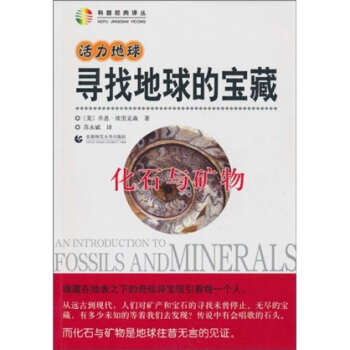

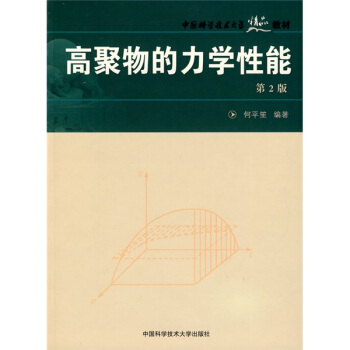
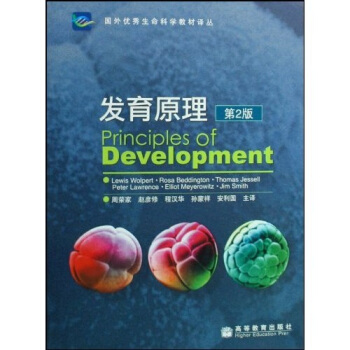
![計數組閤學(第1捲) [Enumerative Combinatorics,Volume 1] pdf epub mobi 電子書 下載](https://pic.tinynews.org/10126330/57280f87N8029551f.jpg)

